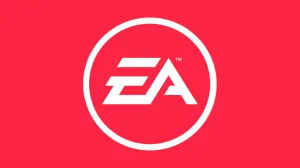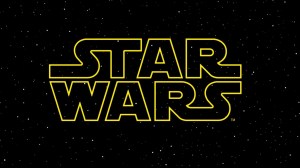
Think of the word origin.
Videos by ComicBook.com
Now think of Superman. Your mind summons images of an exploding planet, kindly farmers in the Midwest, and a baby wrapped in a blanket with the most inspirational “S” you’ll ever find.
Now think of Batman. You’ll likely imagine a dark alleyway with a wealthy couple shot on either side of their crying baby boy, and a window shattering as terrifying bat plunges through it.
Now think of Wonder Woman. There’s an island and maybe some clay or a forbidden tryst. There’s a pilot or a mission. There’s rebellion or possibly hope. It’s really a choose your own adventure, if anything.
None of that is to say that Wonder Woman is a lesser character than her fellow members in the DC Comics “trinity”, but she certainly lacks the sort of definitive beginnings that every child can recite about the other two. The problem isn’t that Wonder Woman doesn’t have any good origin stories. In fact, it may be quite the opposite in that there is an embarrassment of riches all conflicting with one another.
In the past two weeks DC has published Wonder Woman Rebirth #1 and Wonder Woman #1, both written by Greg Rucka and penciled by Liam Sharp. Together with artist Nicola Scott will be telling the Rebirth stories of Wonder Woman with Sharp focused on the “present day” and Scott focused on Wonder Woman’s origins. The Rebirth special established that the intertwining stories will both emphasize questions of where the character comes from, referring to many of her origins and suggesting they are partial or complete fabrications.

This is far from the first time that creators have attempted to provide Wonder Woman with a definitive starting point. Ever since writer William Moulton Marston and artist Harry G. Peter created the character in 1941, it seems that a central focus has been reimagining her beginnings.
The concept for Wonder Woman actually began at home after it was suggested to Marston that he ought to create a superhero to explore the unfulfilled potential of comics he had written about in Family Circle magazine. Marston’s wife Elizabeth encouraged him to make the character a woman. His relationship with Elizabeth and their shared lover Olive Byrne continued to strongly influence themes of feminism, domination, and love in the earliest stories.
Wonder Woman’s very first plot-based origin began in All-Star Comics #8. There she was shown to be a member of a tribe of Amazons on Paradise Island and daughter of their Queen Hippolyta. When Stever Trevor, an American pilot, crash lands on the island a contest is held to see who will bring him home and represent the Amazons. Although she is not allowed to participate, Wonder Woman tricks her mother and proves herself to be the most worthy member of the tribe. From there she became a regular figure within superhero comics fighting Nazis and a variety of other villains, many based in Greek mythology.
Throughout the Golden Age of comics, Wonder Woman was left unchanged. It would not be until the Silver Age arrived that a series of retcons and rewrites would begin, one that has not ended even to this day.

It was during this time that Wonder Woman was revealed to have been given her powers as blessings from the Greek gods. Her special abilities were tied into specific deities much like those of Captain Marvel. She was also given a sister in the form of Nubia, another daughter crafted by Hippolyta from “dark clay” who has long since disappeared from modern canon.
The first significant bottom-up overhaul of Wonder Woman came in the wake of Crisis on Infinite Earths when writers Greg Potter and Len Wein along with artist George Perez provided her with a revamped origin. Now she had been shaped from clay by her mother, but brought to life and blessed by deities. Steve Trevor was no longer her spouse, now an old man tied to his original time period instead. Furthermore, the new creative team distinguished her role in the DC Universe by focusing on her existence as a warrior and allowing for her to kill opponents.
Throughout the preceding decades, writers and artists would continue to tinker and fiddle with Wonder Woman’s origin. In the past five years alone there have been two significant reimaginings of her mythos in the forms of the New 52 relaunch of Wonder Woman created by writer Brian Azzarello and artist Cliff Chiang, and in the original graphic novel Wonder Woman: Earth One created by writer Grant Morrison and artist Yanick Paquette.
The former revealed much of Wonder Woman’s life, including her shaping from clay to be a lie. She was actually a daughter of Zeus, a fact her mother had lied to her about. Azzarello undermined the utopian nature of Paradise Island by revealing the Amazons to be rapists who kept their daughters and sold their sons into slavery. Even Wonder Woman was made to be more violent, having been raised and trained by Ares. It was a controversial take on the character that found a devoted fanbase along the way.

Morrison maintained that Hippolyta gave live birth to Wonder Woman, but switched out the father with Hercules whose sperm was used in artificial insemination. Much of the “Earth One” story pulls from Marston’s original conception of the character, both in regards to plot and thematics. Steve Trevor is returned to being a part of her life and the reason for leaving, but is now juxtaposed with the modern world as opposed to the period of World War II. While this story is considered to be out of continuity, its immense sales and popularity (combined with a sales push tied into Wonder Woman’s newest film appearance this year) have made it the origin story for many readers.
Now Rucka, Sharp, and Scott are attempting to do it once again. The release of Wonder Woman #1 this week marks the end of Azzarello and Chiang’s origin as it is exposed to be a lie. Little is still known about Wonder Woman’s new origin besides the fact that it will reveal the existence of a brother.
This continually changing string of beginnings may seem daunting to someone who has never read a Wonder Woman story before, but it should not. There is a reason that Diana of Themyscira is the third corner of DC’s most iconic triangle of characters and the most popular feminist icon in the superhero genre. The reasons for this have nothing to do with her origin and everything to do with the strengths of her character.
Like Superman she is a paragon of virtue and values. Like Batman she is an avenging angel meant to protect the weak. But unlike her counterparts she poses a unique perspective on the future. Her life is that of an immigrant coming from outside of the world already fully formed; this is the only consistent component of her origin. Whether she comes as an ambassador, superhero, diplomat, or warrior, her message is the same each time. Wonder Woman tells readers that there is a better way to be found, a fair and just way that treats all peoples equally. She lends a hand and works constantly to drive society forward to a better tomorrow.
The truth of Wonder Woman’s story and her resiliency is not found in her past. It comes from the future she presents.








